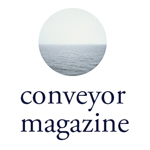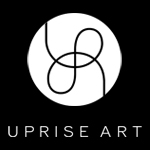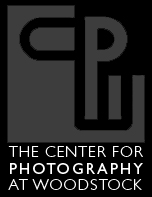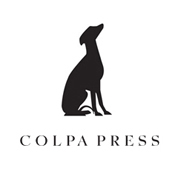Halloween Prelude, 4th Edition.
Halloween creeps closer, and with it, the opening of Macabre & Mysticism at Red Roots Gallery on Saturday, October 29th. Conveyor Editor Dominica Paige continues her foray into the the unnerving (and sometimes terrifying) realms of photography.
Memento Mori & Victorian Portraiture of the Deceased.
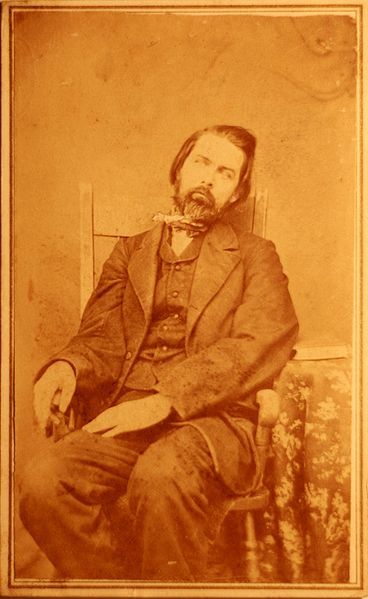
Postmortem photography, which seems rather morose and morbid in modern life, was quite widespread in Europe and the United States during the 19th century.
With the invention of the daguerreotype, portraiture became widespread amongst the middle class who could afford a session with a photographer but were unable to commission a painted portrait. This less expensive and more convenient form of portraiture was also used as a means for memorializing dead loved ones.
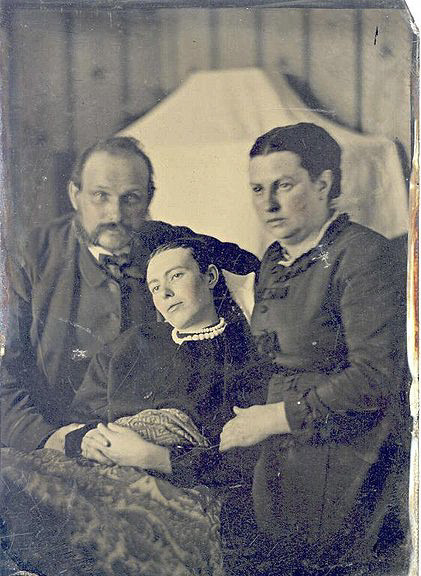
Unlike traditional memento mori, these photos served less as a admonition of mortality and function rather as a keepsake to remember the deceased. Memorializing the dead was particularly common with children and infants, as childhood mortality was common during the Victorian era, and in many cases, a postmortem photograph might be the only image ever made of a child. Children were often depicted with family members or a favorite plaything, or in recline in a crib.
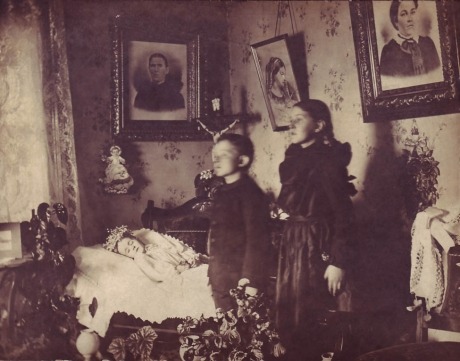
The living appearance was so desirable that, later in history, the photograph would depict the subject with their eyes propped open, pupils often painted onto the photo; the image, especially tintypes and ambrotypes, was commonly manipulated to make the deceased’s face rosy.
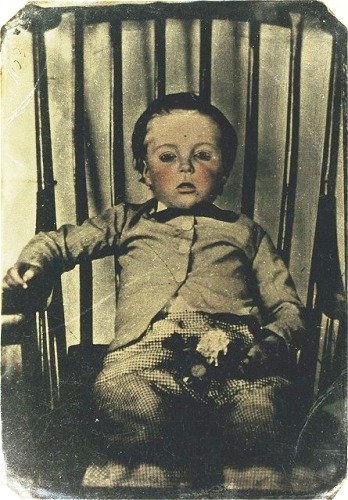
This is terrifying.
Later efforts were less concerned with a lifelike quality and the deceased were shown in coffin, and some very late examples show the dead accompanied by a large group of funeral attendees.

Halloween Prelude, Episode Three.
In which our faithful narrator, Conveyor Editor Dominica Paige continues her week-long spooktacular of unnerving photography. Read on…if you dare! (mwah-hahahahaaa!)
What’s spookier than a fire creeping underground that burns for decades, causing human-swallowing sink holes and the abandonment of an entire town? Perhaps the most infamous instance of a ghost town is Centralia, PA, where a mine fire began in 1962 and continues to burn; in fact, it is estimated that there is enough coal in the mine to sustain the fire for the next 250 years.
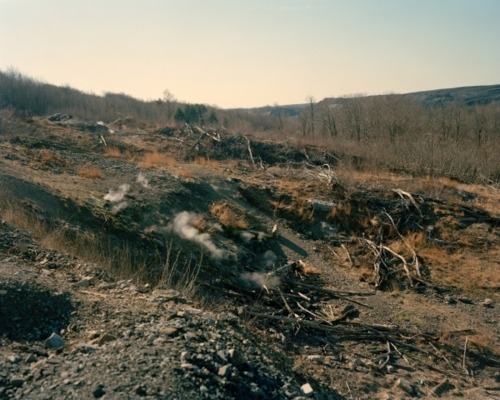
Matt McDonough
In 1981, there were over 1,000 residents in Centralia; in 2010, there were 10. In 2002, the town’s zip code was revoked by USPS. Matt McDonough’s series-in-progress entitled Centralia examines the nearly-deserted town.
Matt McDonough
Matt McDonough
{ http://mattmcdphoto.com }
26 Oct 2011 / 1 note / centralia Matt McDonough Halloween Dominica Paige
Halloween Prelude, Part Deux.
The countdown continues: six days until Halloween, and four days until the opening of Macabre & Mysticism at Red Roots Gallery. In the spirit of the season, Conveyor Editor Dominica Paige is posting daily featuring the creepier side of photography.
The Spirit Photography of William Hope
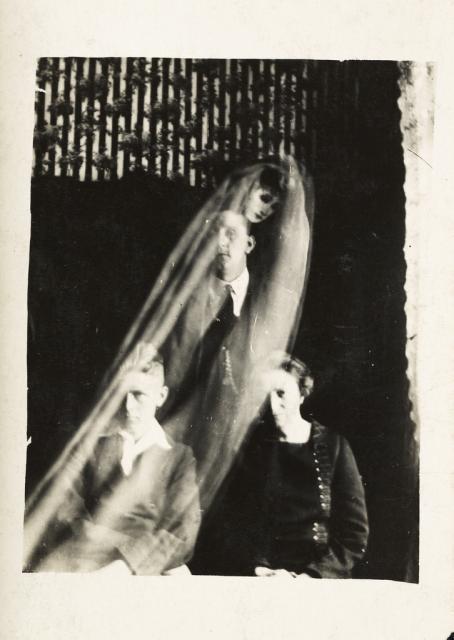
William Hope, Woman with Two Boys and a Female Spirit, Collection of National Media Museum
William Hope’s aptitude for capturing spirits in photographs allegedly came about in 1905 when he and a friend were photographing one another. In one of the photos taken by Hope, another entity appeared in the image, an “extra,” the image of a person who was not physically present when the photo was taken. The extra in question was the deceased sister of Hope’s friend.
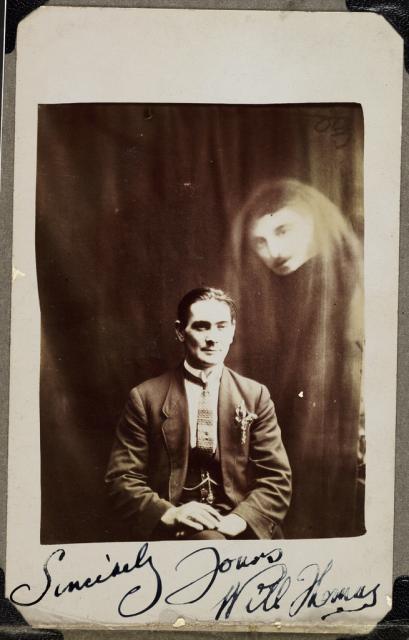
William Hope, Will Thomas with an Unidentified Spirit, Collection of the National Media Museum
Typically in the photographs, ghostly faces appear, floating above or behind the living subjects. In some images, fully formed ghosts would appear, usually draped in sheets. Superimposed images and double exposures were the usual methods for “capturing” the ghosts, though the photographer’s assistant could also drift behind the sitter, dressed in appropriate “spirit” attire, and remain in place a few moments while the shutter was open before ducking out of site.
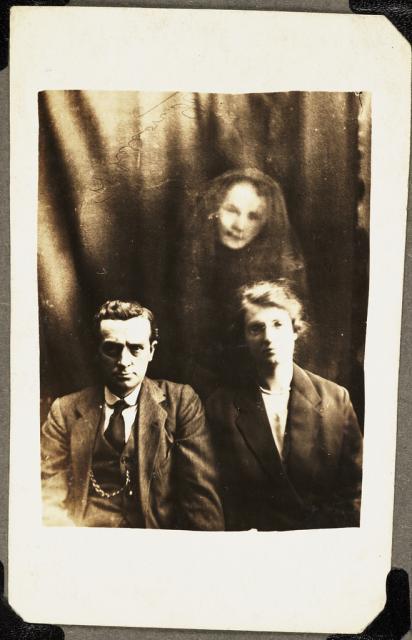
William Hope, Couple with a Female Spirit, Collection of the National Media Museum
Hope became a prominent spirit photographer and formed the Crewe Spiritualists Circle with six other photographers. During their early work, the circle destroyed the negatives of the photos they created as they feared being suspected of witchcraft. They began to make their work public, however, when Archbishop Thomas Colley, a lifelong enthusiast of both the supernatural and Spiritualism, joined the circle.
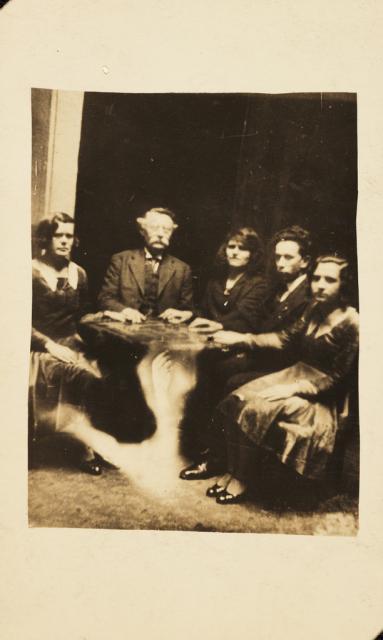
William Hope, A Seance, ca. 1920, Collection of the National Media Museum
In 1922 Hope relocated to London and became a professional medium. The work of the Crewe Circle was investigated on various occasions by paranormal investigators who hoped to prove Hope was a charlatan.The most famous of these took place in 1922, when the Society for Psychical Research sent Harry Price to investigate for fraud. Price collected evidence that Hope was substituting glass plates bearing ghostly images in order to produce his spirit photographs; he provided Hope with glass plates embossed with a special mark that could not be seen except when exposed. Hope substituted these for regular glass plates, and as such the marks did not show up – suggesting that he faked his photographs.
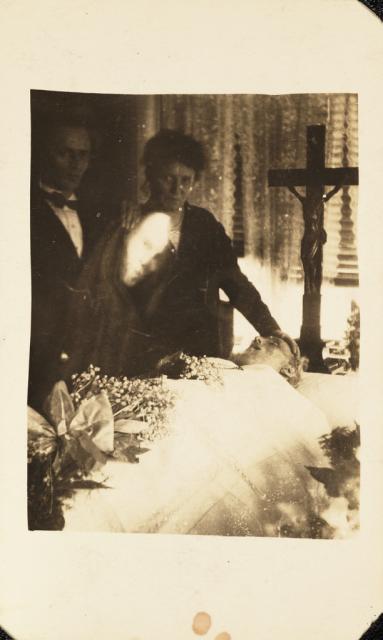
William Hope, Mourning Scene, ca. 1920, Collection of the National Media Museum
Still, hundreds of followers continued to believe Hope’s abilities were genuine. This remains a matter for conjecture, a mystery that remains unsolved. What can be said with certainty is he was rather adept at capturing photographic ghosts, whether real or imagined.
25 Oct 2011 / 3 notes / William Hope Spirit Photography Halloween Dominica Paige
Halloween Prelude, Part One.
The countdown is on: one week until Halloween, and five days until the opening of Macabre & Mysticism at Red Roots Gallery. To evoke the spirit of the season, Conveyor Editor Dominica Paige will dedicate one post each day to the spookier side of photography.
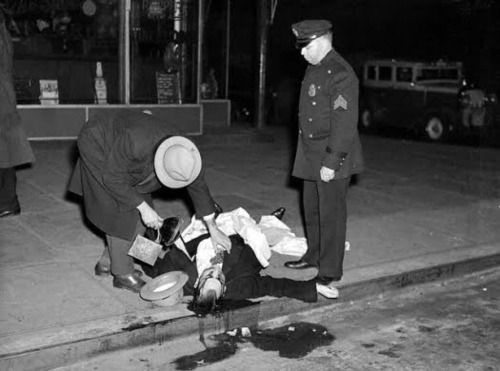
Weegee (Arthur Fellig)
It seems only natural to begin this series with Arthur Fellig, better known as Weegee, whose dramatic noir photojournalism captured the grime and glamor of city life.
With the emergence of tabloid newspapers in 1919 such as The Daily News, The Daily Mirror, and The Graphic, the photographing of death and crimes was nightmarishly circulated. These newspapers, with their graphic front-page photographs and captivating captions, remained popular until the 1960s, and radiated a dark glamour that served to exemplify how the banal becomes electrified by association with the imagery of a crime.
Weegee (Arthur Fellig)
Violating the traditional conventions of photography, photographers such as Tom Howard, Ed Giorandino, and Fellig depicted New York as a dangerous metropolis though their use of framing and lighting. The aesthetic of the crime photograph established a visual language further popularized in nor films such as Citizen Kane, The Wrong Man, and The Naked City.
These photos are not only compulsory records of New York but are also an intricate part of the visual language that has come to define the city, and continues to influence the mythological iconography of Gotham today.
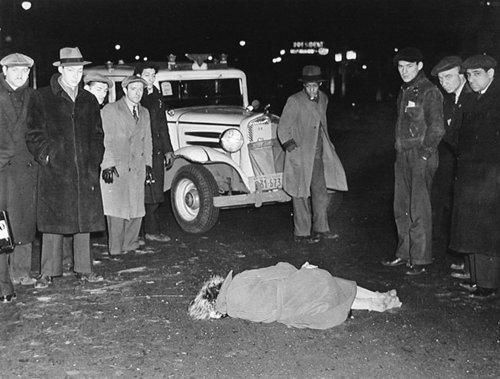
Weegee (Arthur Fellig)
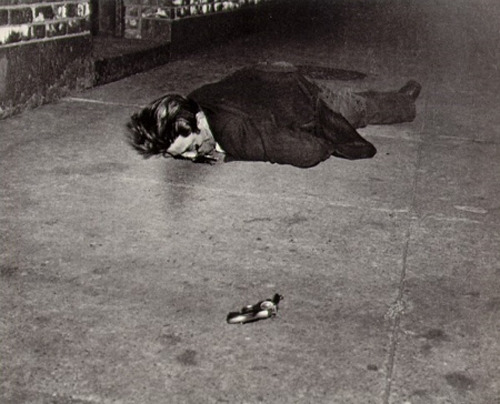
Weegee (Arthur Fellig), Murder in Hell’s Kitchen, 1944
Naked Hollywood: Weegee in Los Angeles opens at MoCA in November 2011 - { http://moca.org }
24 Oct 2011 / 16 notes / Weegee Arthur Fellig Dominica Paige MOCA Noir
Words with Pictures
Words with Pictures is a weekly two-part post that pairs photographers and writers. The first week, a writer is given a photograph to inspire the creation of a new piece of writing. The following week the photographer is given a piece of writing and responds with a new photographic piece. This series is curated by Conveyor Editor Dominica Paige.
Anne-E. Wood and Tyler Wriston { Part 1 }
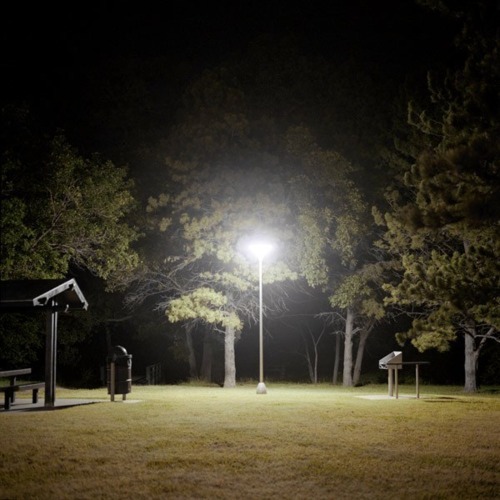
Party Time
It’s not that I think he’s still here, his ghost or anything, restless and haunting these woods. Why did I come, then? It’s my birthday, I’m thirty-four, so twenty years have passed. What have I done with them? Nobody knows where I am right now. I’ve still got the knife he loved with the rusty handle, and the picture of a boat he said was my gift. Listen, I say to the garbage can. I’m having my own party again, I’m not going to lie…but no truth comes either. There’s a horrible moon, this yellow gash in the sky. I want to walk further into the dark, beyond the stream, over the little bridge, find the rock where he sat when I left him, an eight-year-old with his head in his hands, and then further still, to places that don’t exist. I will tonight. I’m buzzed off all this quiet. I step forward, a little unsteady, my sneakers squishing in the grass. The light turns on, a glaring demon. My face is red in front of the world. I’ve got this problem, I say to my shoelaces. I want to talk to you. I can’t sleep. They say, You can barely stand.
Anne-E. Wood’s work has appeared in the magazines Tin House, New Letters, and Gargoyle, among others. She holds an MFA from San Francisco State University and teaches writing at Rutgers University and Gotham Writers’ Workshop. She lives in Brooklyn and is working on a novel.
Tyler Wriston has a BFA in Photography from Pratt Institute. He is presently completing his MS in Art Direction BrandCenter for Art Direction in Richmond, Virginia.
His work can be found at: { www.tylercampbellwriston.com }
19 Oct 2011 / 0 notes / Dominica Paige Words with Pictures Anne-E Woods Tyler Wriston
Words with Pictures
Words with Pictures is a weekly two-part post that pairs photographers and writers. The first week, a writer is given a photograph to inspire the creation of a new piece of writing. The following week the photographer is given a piece of writing and responds with a new photographic piece. This series is curated by Conveyor Editor Dominica Paige.
Evan Rehill and Dominica Paige {Part 2}
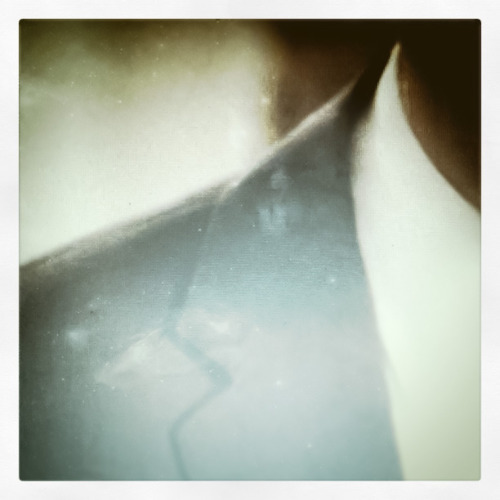
THE LEADING MAN
You know what they say about the hands and feet? None of it’s true. But what they say about the nose? It is. Listen to me talking to you. Ignore my hands and feet. Pay attention to the schnoz. All leading men lead with their noses. I wanted to be a leading man. I had a girl who said, Get your little mittens off the cantaloupes, another who said, You can’t kick into these sheets with sparrow’s feet. I said pay attention to the nose. Another said, You should get the nose fixed. I said you only fix a broken thing. She broke my nose. I cried like a prom queen. She kissed the blood from my lips. I climbed into her tiara. That was ten million years ago. Look at me now. Listen to my nose telling you what’s true.
Evan Rehill’s work has been published in Open City, American Short Fiction, Instant City, and 14 Hills. He teaches at Pratt Institute and Rutgers University. Robotic arms:{ www.evanrehill.com}
Dominica Paige works as an Editor for Conveyor and curates Words with Pictures. She wanted to get in on the fun, too. {www.dominicapaige.com}
12 Oct 2011 / 1 note / Dominica Paige Words With Pictures Evan Rehill
Words with Pictures
Words with Pictures
Words with Pictures is a weekly two-part post that pairs photographers and writers. The first week, a writer is given a photograph to inspire the creation of a new piece of writing. The following week the photographer is given a piece of writing and responds with a new photographic piece. This series is curated by Conveyor Editor Dominica Paige.
Evan Rehill and Dominica Paige {Part 1}
I could murder her right now. I just got off the graveyard. My eyes are bloodshot and sore from the cigarettes and too much coffee. There’s a rip in my stocking. My uniform has a gravy stain over the heart. I’m nineteen years old and feel dead already. I’m walking home when I see her in the vines. Two skinny legs, a plastic sword. Sixteen years old and still thinks the world is make-believe. The world will make you believe, I tell her and she looks out a window while I smoke at the kitchen table, counting tips. Then she picks up her little-kid sword and goes out slaying dragons and knights in shiny armors. A sister is a terrible thing to have. I want to go to her, fall on her sword and smack her awake already. But I don’t. I keep going through the vines, pretend she doesn’t exist.
Evan Rehill’s work has been published in Open City, American Short Fiction, Instant City, and 14 Hills. He teaches at Pratt Institute and Rutgers University. Robotic arms:{www.evanrehill.com}
Dominica Paige works as an editor for Conveyor and curates Words with Pictures. She wanted to get in on the fun, too. {www.dominicapaige.com}
Words with Pictures
Words with Pictures is a weekly two-part post that pairs photographers and writers. The first week, a writer is given a photograph to inspire the creation of a new piece of writing. The following week the photographer is given a piece of writing and responds with a new photographic piece. This series is curated by Conveyor Editor Dominica Paige.
Leif Huron and Jane Flett {Part 2}
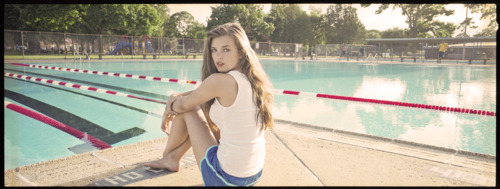
I bunked off today.
I closed the laptop lid and cooed, “Hush child, stay here; I promise I’ll return.”
The sun had already sucked the water from the marshland. All that was left was spittle and dandelion clocks, fragments of glass glittering like the mosaics of waterfalls.
A Hasidic Jew cycled by through the grass. It was strange to see him there, so far from town. He looked like a black paper doorway pasted onto a painting of summer.
I did not try to step through him.
I was busy counting the buttercups and the daisies and recording the tallies in a squared maths jotter. So far, the daisies were trouncing the buttercups seventy-nine to forty and it seemed the buttercups were losing faith, preparing themselves for the button-lipped disappointment of the car ride home.
I was holding out, however, even allowing a jaunty cirrus to distract me from a daisy clump or two: “Aloha, buddy! How’s the view up there?”
/
I have always had a thing for the underdog.
At the end of the marshes lay the octopus tree, beckoning for a hug with his open branches. There was nothing to do but clamber, scuff-kneed, into the boughs.
I found a nook to rest my cheek against and inhaled the smell of broken pencils. I knew I would be safe here from the protestations of the working week, from its spindly, tyrannous fingers.
I knew, if I wanted it, the afternoon was mine. I was free as a feather to play kiss chase with my brain.
Jane Flett lives in London where she writes stories, plays synthpunk cello solos and drinks too much gin. You can visit her at: {www.janeflett.com}
Leif Huron studied film direction and cinematography at the Academy of Film, Television and Performing Arts in Prague, CZ. His films and photographs have been featured as part of the American Photo 2008 Photos of the Year competition, Rush Arts Gallery Freeze Frame exhibition at Art Basel Miami, VUU Collective 2011 Group Show at K&K Gallery, and at Diagonale 2011 Film Festival, Graz, Austri, among others. He is currently a Candidate for MFA in Photography and Related Media at Parsons The New School for Design. Leif lives and works in Brooklyn. {www.leifhuron.com}
Words with Pictures
Words with Pictures is a weekly two-part post that pairs photographers and writers. The first week, a writer is given a photograph to inspire the creation of a new piece of writing. The following week the photographer is given a piece of writing and responds with a new photographic piece. This series is curated by Conveyor Editor Dominica Paige.
Leif Huron and Jane Flett {Part 1}

It’s the morning after and we are standing in the kitchen like cacti on the opposite sides of an open road pelting through the desert.
Camilla’s prettier than a coconut shy, legs like a lily’s stamen. And I know I shouldn’t have, but.
We got gin-drunk at the fair. Our edges slackened like jumble-sale cardigan buttons; we giggled at the hoopla boy’s scowl.
The air was burnt popcorn promises but we grew tired of those childish songs. So we ran, our feet slapping on the parched earth like silver screen heroines furious with the infidelities of their leading men.
We left behind the one-eyed swordsman who cut his girl in two, left the bearded lady with her sad magazine-advert eyes, left the Mexican midget and his tightrope (so small a tightrope, so close to the ground.)
We reached the bales. Sat dangle-legged and picnicked on hunks of watermelon. She bit into hers and the juices dribbled down her chin and it looked sticky as the floor when
the lights come up, the music dwindles, the boys go home. And I didn’t mean to but the sun was throbbing and
I licked her.
I licked her syrup-pink candyfloss chin, softer than camisoles on skinned knees.
And before I could explain, she was gone.
/
It’s the morning after and we are standing in the kitchen like cacti and I open my lips to say I’m sorry but
there are pits in my teeth as black and patent as London cabs, so I hail one
realising it’s time
to leave.
Jane Flett lives in London where she writes stories, plays synthpunk cello solos and drinks too much gin. You can visit her at: {www.janeflett.com}
Leif Huron studied film direction and cinematography at the Academy of Film, Television and Performing Arts in Prague, CZ. His films and photographs have been featured as part of the American Photo 2008 Photos of the Year competition, Rush Arts Gallery Freeze Frame exhibition at Art Basel Miami, VUU Collective 2011 Group Show at K&K Gallery, and at Diagonale 2011 Film Festival, Graz, Austri, among others. He is currently a Candidate for MFA in Photography and Related Media at Parsons The New School for Design. Leif lives and works in Brooklyn. {www.leifhuron.com}
7 Sep 2011 / 5 notes / Words with Pictures Dominica Paige Leif Huron Jane Flett

